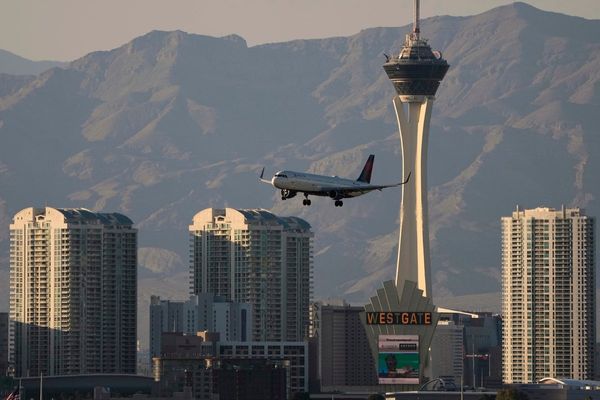
One aspect of the Paris Métro is minimalism. Most stations are simply white subterranean vaults with no surface building to sully the beauty of the streets. Sometimes, a station entrance is indicated by art nouveau iron flowers of no known genus (except possibly triffid), and these – the creations of Hector Guimard in the early 1900s – signify the flamboyance that coexists with the minimalism.
The sheer theatricality of some stations reflects a society that accords engineers a high status (the UK has no real equivalent of the elite engineering school École Polytechnique) and encourages them to make bold statements. This kind of swagger is evident in the Eiffel Tower and the Pompidou Centre. It will also be manifest in the huge new stations of the Grand Paris Express scheme which, between now and 2030, will double Métro mileage. But here are some fine examples on the existing network.
Cité, Line 4

There could be no question of building railway bridges in the heart of Paris, so Line 4 had to go under the river, waterproofed in great tanks called caissons. Saint-Michel and Cité stations comprise three caissons: vertical ones at either end for access and a lateral one for the platforms. At Cité, the lateral caisson forms a strangely distorted version of the traditional Métro vault, illuminated by antique-looking white globes. One of the vertical caissons is spookily disused; the other resembles a great riveted metal bucket, with rusty water dribbling down the sides, and primitive staircases ascending in a crisscrossing Escher-like way towards the ticket hall. There is a lift, but most voyageurs prefer to walk up, shoes and boots clanging, Parisians (many of whom live in flats in tall, old buildings) being accustomed to stair climbing.
Nearby Ha Noi 1988 serves Vietnamese food in a flower-decked room with a terrace overlooking the Seine (or at least the tops of the plane trees rising up from its banks). The Pho du Chef is particularly recommended.
viet-eat.com
Arts et Métiers, Line 11

Métro panache is exemplified on the Line 11 platforms at Arts et Métiers, the most thoroughgoing of the 20 or so themed or “cultural” stations. The vault is clad with panels of riveted copper, with portholes in which models of machines dreamily float. You are in Captain Nemo’s submarine, which has dived deep, if the dim lighting is anything to go by. The design – surely apprehended by most tourists as some inexplicable mirage – was created in 1994 to mark the bicentenary of the museum served by the station.
Nearby A museum of technology that’s as aesthetic as an art gallery. In the steam engine section, look out for the burnished narrow-gauge tramlines on the wooden floor – once used for transporting heavy exhibits.
arts-et-metiers.net
Mirabeau, Line 10

Among the flamboyant features of the Métro are its track loops encompassing multiple stations: a means of giving an intensive service to a particular area. One such occurs at the eastern end of Line 10, and it’s at Mirabeau that Line 10 splits for the loop to begin. Here, you can only board trains that are coming off the loop and heading back towards town, but you can also watch trains coming from town and heading on to the loop, and as they do this they climb, because they have just come from under the river. What you see from the single platform is the track immediately in front of you (where a train will eventually arrive to take you off the loop), beyond which is a track on a steep ramp. Trains heading for the loop go roaring up that ramp while paying no attention to the station and, since they are tilted, you can see sparks fizzing about their undersides like fireflies.
Nearby Less than 10 minutes from Mirabeau lies rue Jean de la Fontaine, which is lined with swirly art nouveau apartment blocks. Numbers 14, 17, 9, 21 and 60 are by Hector Guimard. His masterpiece (which earned him the metro gig) is number 14, Castel Béranger, whose iron front gate is a scribble of whiplash curves. It’s easy to imagine Guimard’s Métro triffids oozing out of here to take Paris by storm.
Gare d’Austerlitz, Line 5

The theatrical highlight of Line 5 – and perhaps the entire Métro – is its river crossing between Gare d’Austerlitz on the Left Bank and Quai de la Rapée on the Right. The trains come above ground after Saint-Marcel; they then enter, through a skylight, the attic of Gare d’Austerlitz mainline station, where the Métro station of that name is located. Trains leave the attic through another skylight, to cross the river on the elegant, single-span Viaduc d’Austerlitz. As they descend towards Quai de la Rapée station, they swirl with misplaced exuberance around the Paris morgue, otherwise known as the Institut Médico-Légal, which does its best to look anonymous on the riverbank. This downhill stretch is known as “the toboggan”, and after you’ve ridden it once, you might want to return to Gare d’Austerlitz to do it again.
Nearby The rambling gardens of Jardin des Plantes (free) and its academically important hothouses (for which admission is charged) have such old-world elegance that it seems a shame visitors are not wearing white linen suits or twirling parasols.
jardindesplantesdeparis.fr
Bir-Hakeim, Line 6

Line 6 emerges from a tunnel at Passy on the Right Bank for a spectacular run of elevated stations, beginning with the river crossing on Pont de Bir-Hakeim, which commands views of the adjacent Eiffel Tower. It’s worth alighting at Bir-Hakeim station for a look at the bridge you’ve just traversed. The lower deck is a road and walkway; the upper deck, which carries the Métro, rests on great stanchions like an avenue of iron trees – which becomes something more like an enchanted forest at night, when the lanterns hanging from it are lit.
Nearby Saucisson and pomme purée is among the food available in Comptoir Principal, at prices below the norm for this part of town. It’s a corner site, and a terrace table at the apex has views of the Eiffel Tower to one side and Line 6 trains rolling over their ornate viaduct to the other.
comptoirprincipal.com
Gare de Lyon, Line 14

Opened in 1998, Line 14 is the showpiece of the existing network, its stations resembling sets for a science fiction film, and they are big – future-proofed. Descending the glittery escalator at Gare de Lyon, you see before you a concrete hall of great severity, while to the right, behind a glass screen, is a large “tropical garden”. It’s watered, allegedly, by regular automatic “thunderstorms”. I’ve never seen one of these, but I assume seasoned Line 14 commuters take them in their stride.
Nearby With its gilded interior and frescoes depicting heat-dazed Riviera scenes, the Train Bleu – accessed from the Gare de Lyon concourse by a grand staircase – is surely the world’s most sumptuous station buffet, and possibly the most expensive. But beyond the main “gold room” is a cosy, railway carriage-like bar where a glass of wine is not quite as pricey as you might expect.
le-train-bleu.com
Andrew Martin travelled to Paris on Eurostar. His book, Metropolitain: An Ode to the Paris Metro, will be published by Corsair (£16.99) on 10 August







